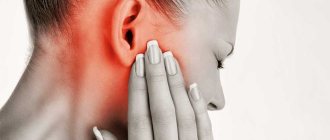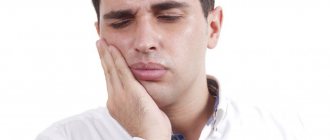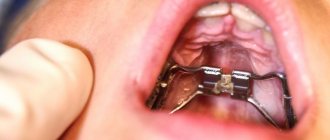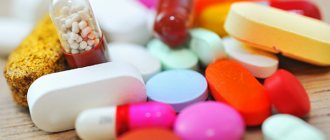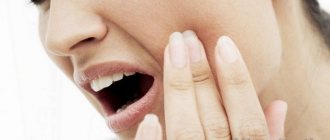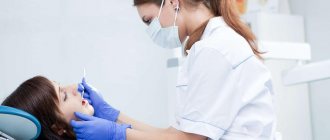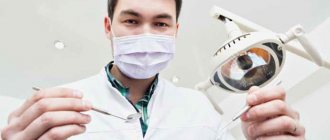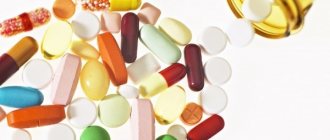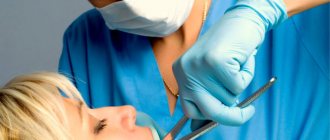Do all patients need to take antibiotics after tooth extraction?
Is it necessary to take antibiotics after tooth extraction? Tooth extraction (this is the official name of the removal process) is a surgical operation after which the damaged soft and hard tissues of the jaw require time for rehabilitation. To ensure that the hole formed at the site of the extracted tooth heals without problems, and also to eliminate the risk of infection and the development of complications during this period of time, doctors prescribe antibiotic therapy.
Do you need to have teeth removed during pregnancy and don’t know what to do? Read a detailed article on this topic on our website.
It is not always necessary to take antibiotics after tooth extraction
However, not all patients need to take medications. For example, if the procedure was planned and predictable, the patient is healthy, and the operation itself took place without unnecessary trauma, then the doctor will not prescribe an antibiotic after tooth extraction. Sometimes a specialist assesses the situation over time and may prescribe a course of medication not immediately after the operation, but only after a routine examination. For example, if the patient complains of persistent pain, deterioration in general condition, and the doctor discovers redness and swelling of the mucous membrane, the presence of pus in the socket. That is, in situations where complications arose.
Signs of complications after tooth extraction
Patients are often surprised and distrustful when the dentist prescribes antibacterial tablets after a tooth extraction procedure.
Meanwhile, resection is a full-fledged surgical intervention in soft tissue. If the patient does not know himself, then he should ask the dentist what antibiotics they take after tooth extraction, what exactly will be most effective in his case. If you do not take medications that prevent the development of bacterial and putrefactive processes in the socket, then there is a risk of the following complications:
- heavy bleeding often develops in patients prone to hypertension, in people with poor blood clotting and iron deficiency anemia;
- dry socket - this is the name of the condition when, after resection, a blood clot does not form, but bone is visible instead;
- alveolitis is a complication in which bacteria multiply in a blood clot, resulting in inflammation, pain and swelling;
- osteomyelitis is an inflammatory process in the bone tissue of the jaw;
- paresthesia is a pathological condition when the nerve endings are damaged, as a result of which the patient experiences severe pain and an inflammatory process develops;
- Damage to the oral mucosa during the procedure most often occurs accidentally, but deep wounds can fester and provoke an inflammatory process.
Normally, the postoperative period is accompanied by the following symptoms: fever, bleeding of the mucous membrane, aching pain, swelling of the affected area. The degree of manifestation of unpleasant symptoms decreases after 2 days, and after 5 days the symptoms disappear completely.
A cause for concern is the spread of pain to the tongue, face, ear and adjacent teeth, as well as swelling, which causes severe discomfort. These side symptoms indicate the development of severe complications that require timely treatment.
Incorrect dosage, non-compliance with the rules for taking medications, as well as incorrectly selected medications can provoke the following unpleasant consequences:
- Alveolitis is an inflammation of the socket of an extracted tooth.
- Periodontitis is an inflammatory process that develops in the soft tissues surrounding the empty socket.
- Flux is inflammation of the periosteum.
- Osteomyelitis is purulent-necrotic processes affecting the jaw bone tissue.
So, in modern dental practice, after tooth extraction, if there are indications (inflammatory processes, certain chronic diseases, problems with blood clotting), it is customary to prescribe antibacterial therapy. Why are such drugs needed?
Who can't do without taking antibiotics?
Antibiotics must be taken during tooth extraction if there is at least one of the following risk factors:
- unscheduled removal due to an acute inflammatory process: it often happens that a patient comes to the dentist with acute pain, but the tooth can no longer be treated or restored (for example, a large cyst has grown on the root),
- “figure eight” extraction: wisdom teeth often have a complex structure (their roots can be branched and tortuous), they can be impacted or dystopic. To remove them from the jawbone, doctors are sometimes forced to cut through the gum, crush the jaw and root, taking it out in parts. Next, stitches are applied. The procedure is complex, therefore, when removing “eights”, antibiotics must be taken,
Mandatory medication is prescribed for complex extraction operations.
According to statistics, in the case of a complex extraction procedure and without additional drug therapy, complications occur in 38% of patients.
- traumatic removal: for example, a doctor, due to carelessness or lack of professionalism, could severely damage the gum, the wall of the socket, which could cause severe bleeding,
- the presence of untreated teeth in the mouth: when removing a tooth, antibiotics must be taken by all those who have untreated caries, pulpitis, periodontitis, cysts, or periostitis in neighboring units. It is also important to take medications for those who have inflammation of the gums, gingivitis and periodontitis,
- old age: in mature people, the immune system is weakened, and tissue regeneration processes are much slower than in young people,
- the presence of chronic diseases: for example, diabetes, bleeding disorders, hypertension. If hemostasis is impaired, the patient may develop anemia without additional drug support.
Features of taking a pharmacological substance
The use of medication for dental therapy is carried out after the appointment of the attending physician. The patient must read the instructions provided, paying attention to the following special instructions:
- Before first use, you must make sure that there are no allergic reactions to the components included in the drug. It is advisable to conduct a preliminary allergy test.
- The product is used in the formation of a bacterial type of infectious process caused by pathogenic microflora that is sensitive to the active ingredient. Amoxiclav has no effect on viral infections. Before therapy, it is necessary to carry out bacteriological culture to determine the type of pathogen and its resistance to the drug.
- If there is a lack of the required effectiveness of the drug within two days, then the drug is replaced with a similar substance or a change in treatment tactics is necessary.
- The medication is prescribed with extreme caution to persons with impaired renal or liver function, and at the same time, constant monitoring of their performance is carried out.
All recommended features must be taken into account when drawing up the necessary therapy regimen.
Only a doctor can determine the exact dosage of Amoxiclav after tooth extraction. Usually it depends on the degree of damage, the state of the patient’s body’s defenses and the threat of complications. Of considerable importance is the presence of contraindications and the risk of side effects in different people.
Most often, Amoxiclav should be taken for at least five days in a row, two grams per day, divided into two doses.
After tooth extraction, other medications may be prescribed. The closest analogue is Sumamed. Most often it is prescribed in the presence of contraindications, manifested in the form of liver or kidney failure, cholecystitis or individual intolerance.
Often, experts also prescribe Amoxiclav for toothache. In this case, you must follow the recommendations for taking it.
These include the following:
- It is advisable to drink the medicine no earlier than an hour before eating food or two hours after it;
- Amoxiclav should be consumed with water at room temperature;
- it is necessary to strictly follow the dosage regimen;
- the use of other pharmacological substances at the same time is permitted only with the specific instructions of a doctor;
- if after three days of treatment with Amoxiclav there are no signs of improvement, then you need to inform your dentist;
- you should completely abstain from alcoholic beverages;
- It is advisable to simultaneously take measures to prevent dysbacteriosis.
Self-exposure to the affected area with antibiotics does not make logical sense - in one case out of a hundred, the patient correctly guesses the required drug. When visiting a medical facility, the patient undergoes a full diagnostic examination, which allows one to determine the type of pathogen that has penetrated and its level of resistance to medications.
We invite you to read: Air Flow teeth cleaning - what is it, recommendations after whitening
During the examination, the dentist will accurately determine the problem tooth that caused the formation of the inflammatory process, the need for sanitation of the oral cavity (treatment of carious surfaces) and only after all the procedures will he prescribe a treatment regimen.
Purulent lesions that form near the apex of the tooth root are most often caused by staphylococcal or streptococcal infections. Even without carrying out the necessary diagnostics, experienced specialists will recommend that the patient adhere to the following rules:
- the total time of therapeutic effect cannot exceed two weeks, a smaller number of days is determined by the severity of the pathological process;
- flux detected in the initial stages can be treated conservatively with medications;
- pathology recorded in advanced stages requires surgical intervention.
The presence of constant toothache indicates the development of pathological abnormalities that cannot be cured on your own. In any scenario, a visit to a dentist will take place. Experts recommend avoiding self-medication with the “best” antibiotics recommended by neighbors and work colleagues.
The drug Amoxiclav is one of the most commonly used drugs in the practical work of surgical dentists. The positive quality of the medication is its tolerability and the minimum number of adverse reactions of the body.
Use during pregnancy and lactation is not prohibited by the manufacturer; there is only a limitation on permissible dosages. If the requirements of the instructions attached to the pharmacological substance and the advice of the attending physician are correctly followed, the drug will act in a short time. The high effectiveness of the drug allows it to be considered one of the main drugs for the treatment of inflammatory and other pathological processes in the oral cavity.
Removing a wisdom tooth is a complex and painful operation that requires a highly qualified doctor. The greatest danger comes from complications such as bleeding, infection and suppuration of the gums and adjacent teeth. Therefore, antibiotics are indicated for almost all patients. The absolute indications for antibiotic therapy are:
- Operations complicated by bleeding, tooth fracture, gum rupture, damage to adjacent anatomical structures.
- Patients with a high probability of suppuration of the gums and adjacent anatomical formations after surgery (patients with immunodeficiency, chronic inflammatory diseases, pustular diseases of the oral cavity).
- Generalized infections or the threat of their occurrence during a complicated postoperative period.
What happens if a patient refuses to take antibiotics?
If you are interested in the answer to the question of whether you need to take antibiotics after tooth extraction, then you need to have an idea about the negative consequences that can happen if you do not take medications.
The very first thing that can happen is that a protective clot will not form in the hole of the removed unit. For example, this can happen against the background of poor blood clotting, or when the body’s immune forces are weakened. The presence of a “dry” socket in patients is often complicated by alveolitis, when bacteria penetrate into an unprotected wound, and an inflammatory process and suppuration begin in it, accompanied by acute pain, swelling, and a general deterioration of the condition.
Refusal to take medications can lead to inflammation of the socket
If the procedure was traumatic or you have untreated dental diseases in your mouth, and you are not going to take any antibiotics after tooth extraction, then the inflammatory process can reach the jaw bone, and osteomyelitis will begin. This purulent disease easily spreads to neighboring organs and can lead to sepsis and even death. Periostitis may also develop.
In any case, if you begin to experience the listed complications, you will no longer get away with one visit to the doctor; you will have to undergo treatment for a long time. And the treatment will cost a pretty penny. It is much easier to take a course of antibiotic therapy.
Tooth pulled out: what to rinse with?
There is probably no better way to recover from tooth extraction than by rinsing your mouth several times a day. The following solutions are used for the procedures:
- Chlorhexidine 0.05%. Before using the drug, you must clear your mouth of food debris by rinsing it with water. A sufficient dose of solution for one time is 1 tbsp. l. The drug should be kept in the mouth for 30-40 seconds. near the socket of the extracted tooth. The solution should not be swallowed, so its use is not recommended for children. You can rinse your mouth for no longer than 12 days, so as not to kill the microflora.
- Miramistin 0.01%. This is an active antiseptic that returns local immunity to normal and promotes wound healing. Effective for purulent inflammation in the socket. Safe for children. In addition to regular bottles, it is also available in aerosol form, which is more convenient to use.
- Furacilin. It is necessary to finely crush 1 tablet and dissolve it in a glass of water.
- Potassium parchment. Ordinary potassium permanganate copes well with the possible risk of inflammation. The solution should not be too concentrated: the consistency suitable for rinsing reveals itself as a light pink color.
- Sea salt. You need to add 1 tsp. salt into a glass of boiled water - the solution is ready.
- Soda. Similar to the previous recipe. If desired, salt and soda can be combined in one solution.
- Herbal decoctions. Preference should be given to plants that have anti-inflammatory and disinfectant properties: oak bark, chamomile, sage, St. John's wort. You need to add 1 tbsp. l. herbs into boiling water and boil for 15-20 minutes. To rinse, the broth must be cooled to room temperature.
Despite all its usefulness, rinsing after tooth extraction is possible only after 3 days. Until this time, there is a risk of preventing the formation of a clot and harming the open socket.
What antibiotics can you take?
What antibiotics to take after tooth extraction is decided ONLY by the doctor. However, most often in such cases the following drugs are prescribed. We will, of course, list them, but in no way do we encourage you to start self-medication.
"Flemoxin"
First generation antibiotic. Effective against gram-positive and gram-negative microbes. Suitable for the treatment of complications after extraction in children from three years of age. Has a wide spectrum of action. A side effect after taking it is diarrhea.
"Azithromycin"
Azithromycin is prescribed very often after tooth extraction, because it has few side effects, is non-toxic, and is well tolerated by most patients. In the form of a suspension, the medicine can be used in children from six months of age, in the form of tablets and capsules - in patients from 12 years of age.
"Amoxicillin"
This is an antibacterial bacteriostatic drug from the penicillin class. The drug relieves the inflammatory process well and does not allow the infection to spread further. Contraindications to its use are the first trimester of pregnancy, lactation in women, children under three years of age, allergic reactions. Available in the form of granules, tablets and capsules. Granules for preparing the suspension contain sucrose, which should be taken into account by people with diabetes. Duration of treatment – 5-14 days.
"Augmentin"
The medicine in powder form for preparing a suspension is suitable for babies from three months of age. Tablets can be taken by children over 12 years old and weighing at least 40 kg. An antibiotic after tooth extraction called “Augmentin” is suitable for use by nursing women.
"Lincomycin"
Contraindications for use are fungal diseases, damage to the mucous membranes of the oral cavity, pathologies of the kidneys and liver. It helps well for healing the hole after tooth extraction with flux, paralyzes the activity of microbes.
"Cefixime"
Often the drug is prescribed after complex extraction, after removing the “eights” and chewing units. It is also effective in the treatment of alveolitis.
"Ofloxacin"
Contraindications for use: age under 18 years, pregnancy. The drug is available not only in the form of tablets and powders, but also in the form of an ointment. Your doctor may recommend applying compresses with this ointment to damaged tissue. Often used after extraction of a tooth with a cyst.
There are other types of antibiotics that dentists prescribe. Remember that when determining which antibiotic is best to take after tooth extraction, the doctor must be guided by your state of health. Therefore, do not hide important facts and information about chronic diseases from a specialist.
Side effects
Long-term use of antibiotics may cause side effects
Their manifestation can be triggered by incorrect selection and prescription of the drug, as well as if the rules for its use have been violated.
The pharmacodynamics of antibiotics is based on the absorption of the active substances of the drug by the intestines, followed by its distribution throughout all tissues of the body.
The active substances of the antibiotic undergo breakdown in liver cells and, together with bile, feces and urine, are excreted from the body.
With long-term use of the drug, the following side effects may occur:
- Development of dysbacteriosis or candidiasis.
- Attacks of nausea.
- Vomiting.
- Inflammatory processes in the oral cavity.
- Allergic dermatitis on the skin of the body and face.
- Minor vascular bleeding in the oral cavity.
- Kidney and liver dysfunction.
- Weakening of the body's protective functions.
Important! If side effects occur, you should immediately stop taking the drug and replace it as prescribed by your doctor.
How to take antibiotics correctly
Whatever antibiotic your doctor prescribes for you after tooth extraction, do not forget that it has side effects and contraindications. Such medications have a very powerful effect, but in order for the result to live up to your expectations, do not forget to follow some rules:
- adhere to the dosage indicated in the instructions: do not increase the amount of the drug taken even if it does not give the desired result,
- Do not reduce the dosage if you start to feel worse. Remember that all medications have a cumulative effect, and antibiotics most often begin to “work” on about 3-5 days of use. If you have any problems or doubts, consult your doctor first.
- Take the tablets with a sufficient amount of liquid: in this case, you are allowed to drink only clean drinking water. No juices, coffee, milk or soda - these drinks can neutralize the effect of medications,
- take medications according to instructions: either before meals or after meals,
- do not take alcohol while undergoing antibiotic therapy,
- do not complete the course of treatment ahead of schedule: if therapy is interrupted, the disease returns, and the bacteria that caused it mutate, i.e. This type of medicine no longer works on them. And then you will have to take a different drug as a new course.
The tablet must be taken with plenty of water.
Side effects and contraindications
To determine which groups of patients are contraindicated for a particular antibiotic, you should read the instructions. In most cases, therapy with the use of such medications is contraindicated:
- pregnant women (especially in the first trimester);
- during lactation;
- for chronic liver and/or kidney diseases;
- most antibiotics should not be used by children under 12 years of age;
- in case of individual intolerance to the drug or its components.
Read also: Tsiprolet from flux
Can antibiotics cause harm?
Most often, the question of whether it is necessary to take antibiotics after tooth extraction is asked by those patients who are afraid that they will do more harm than good. For example, many fear the development of gastrointestinal dysbiosis, allergies and the appearance of bad breath. However, some independent studies suggest that disturbances in the intestinal microflora go away on their own after finishing taking modern medications. At the same time, it is not necessary to drink probiotics to restore microflora.
In order not to harm the body, it is necessary to restore the microflora
If you are afraid of dysbiosis, then simply increase the amount of fermented milk products consumed during the period of treatment. Fermented milk products contain bifidobacteria, which will support the beneficial microflora of the gastrointestinal tract. For the same purposes, you can also take Linex or Diflucan or Bifiform together with antibiotics.
Do you know if it is necessary to take antibiotics after tooth extraction? If a doctor confirms the need to take them, then you need to do it! However, you definitely cannot prescribe medications for yourself, because... There is no universal drug - they all have a different spectrum of action.
As for the likelihood of allergic reactions, it really exists. In particular, for taking drugs of the penicillin group. To rule it out, tell your doctor in advance that you are prone to developing allergies. The specialist will select a drug with which the risk of its development will be minimal.
Notice
: Undefined variable: post_id in
/home/c/ch75405/public_html/wp-content/themes/UltraSmile/single-item.php
on line
45 Notice
: Undefined variable: full in
/home/c/ch75405/public_html/wp-content /themes/UltraSmile/single-item.php
on line
46
Rate this article:
( 4 ratings, average: 4.00 out of 5)
removal of a tooth
Consulting specialist
Vedeneeva Alla Sergeevna
Doctor's rating: 9.2 out of 10 (5) Specialization: Implant surgeon, ch.l.h. Experience: 32 years
Comments
What antibiotics will help best and most effectively after tooth extraction?
Masha (04/30/2019 at 15:50) Reply to comment
- It all depends on the clinical case. So, if the patient only needs to prevent the development of complications after the procedure, then doctors prescribe less aggressive drugs such as Flemoklav. If complications arise during the operation or in the coming days after it, then treatment can be carried out with the help of Vilprafen, drugs of the tetracycline group (help against bacterial and fungal infections). But in any case, the drug must be prescribed by a doctor.
Editorial staff of the portal UltraSmile.ru (05/03/2019 at 09:11) Reply to comment
Write your comment Cancel reply
The best painkillers
Non-narcotic analgesics are used to relieve toothache. Most of them also have anti-inflammatory effects. Units should be pulled out with the obligatory subsequent administration of analgesics with anti-inflammatory effects.
Important! Painkillers after tooth extraction cause irritation of the gastric mucosa and the likelihood of increased bleeding. Therefore, they are stopped as soon as the intensity of symptoms decreases.
Most often, one of the following medications is prescribed.
Its effectiveness is tens and hundreds of times higher than that of other analgesics.
The most powerful medicine. Its effectiveness is tens and hundreds of times higher than that of other analgesics. It is especially useful if you need to numb a wound after a complex operation or a wisdom tooth. It has 2 release forms - tablets and injections. Non-steroidal anti-inflammatory and antipyretic drug based on ketorolac. Its analogue is “Ketorol”.
Capsules are taken symptomatically or 3 to 4 times a day at regular intervals with at least 100 ml of water. If necessary, increase the dose by 2 times. The maximum duration of the course is 1 week.
